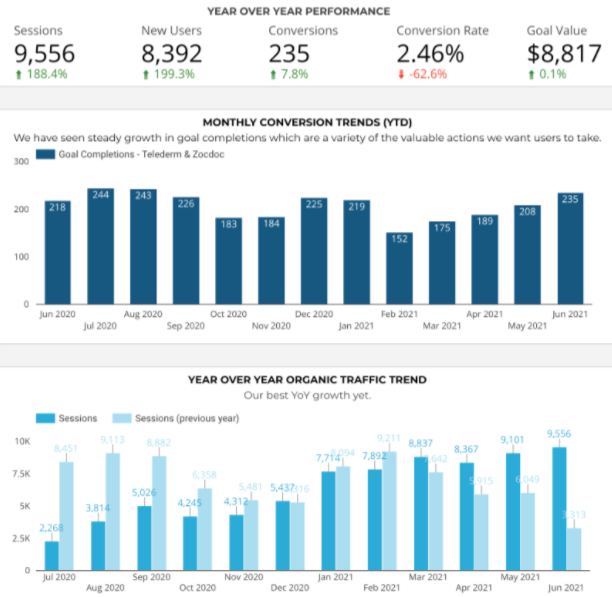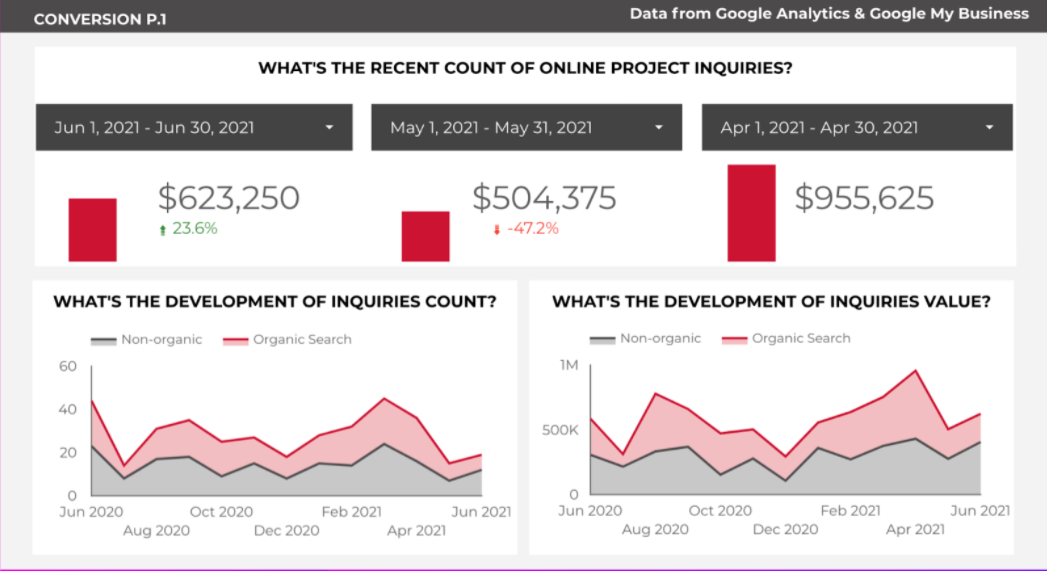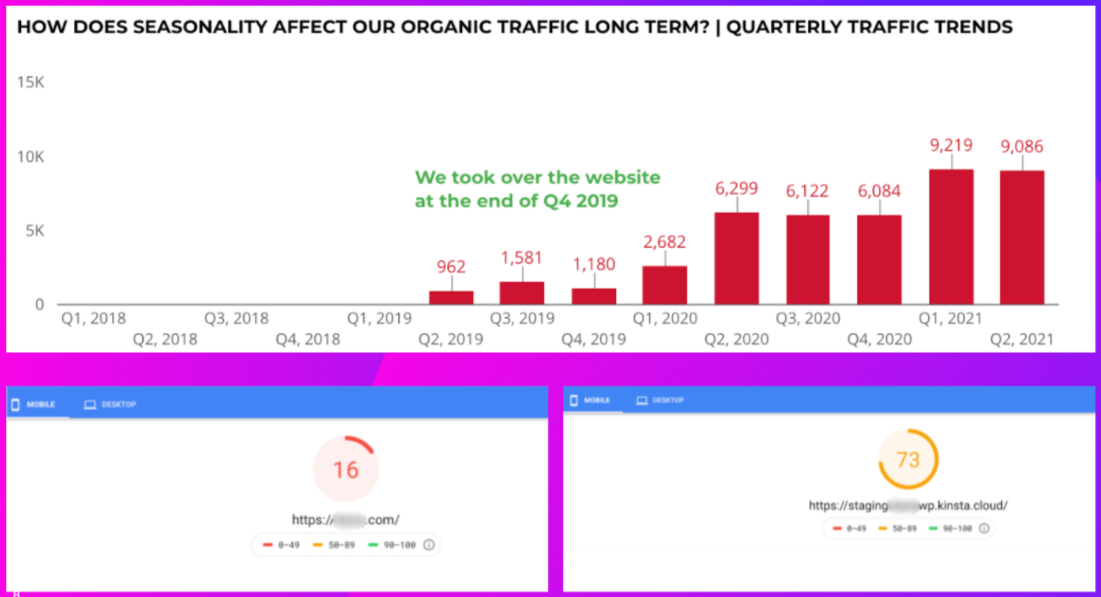The latest in our Deepcrawl webinar series explores how SEOs demonstrate the value of organic search to the C-suite.
The discussion was led by our own Head of Enterprise Sales, Dave Brown, and featured a fascinating presentation by Branko Kral.
Kral draws on his experience as Director of Content and Analytics at Chosen Data, talking us through the fundamentals of communicating that search is valuable, as well as digging down into concrete strategies for presenting data to stakeholders who might have little or no idea about how technical SEO works.
Read on for our key takeaways from the webinar. You can also see Kral’s full presentation and a comprehensive Q and A in the embedded video above.
The current state of the nation
It is old news now, but organic search is booming. In the wake of the Coronavirus pandemic, we are seeing users rely more on search engines to look for products and services than we did before.
In a business sense, some brands are seeking to regain losses they felt due to Covid-19 by reorienting their marketing for an increasingly digital audience. Others are working to capitalize on successes they made during the pandemic – striving to keep their visibility in the SERPs.
Against the backdrop of the global pandemic, Google itself is making significant changes too. The page experience update and the introduction of Core Web Vitals are shaping how important UX is to rank in the search engine. This means that brands and SEOs must get their head around a new set of metrics and they need to make sure they are working with developers, engineers et al. to ensure their pages are up to scratch.
This evolving collaborative relationship between SEO teams and other areas of the business is a fundamental shift in its own right. Search is growing in value to businesses. But increasingly, SEOs need to be able to justify further investment and need to be able to present this value to the leadership in order to increase capacity or to be part of certain conversations.
How to communicate the value of SEO
Both Brown and Kral agree that sometimes organic search is a bit of a mystery to business leaders.
‘As SEOs, we get excited about charts and results about traffic,’ Kral says. ‘But really the leadership cares about something else. Sometimes it’s sales. Sometimes it isn’t. But even when they say it isn’t sales directly, it has to be something that contributes to the bottom line.’

The first fundamental for Kral, then, is to always be including dollar signs in reporting to some degree. ‘Goal Value’ is a good example here.
‘It becomes a conversation about numbers and not so much about emotion,’ he says.
This is a good springboard for talking about potential ROI and looking at Customer Lifetime Value – framing the conversation as a ‘financial investment’.
Kral also offers some good tips for getting these conversations going even for businesses that don’t yet have a lot of data to work with. Secondary sources, benchmarks, and case studies are easy to find online. And there is always the option of implementing some ‘quick win’ strategies that bring short-term results – for example, targeting some paid search keyphrases, and looking for SEO low hanging fruit (such as content overhaul).
Kral also highlights that proper reporting doesn’t require a lot of budget. Google Analytics, Data Studio, and Deepcrawl offer more than enough detail to highlight the contribution of SEO to the bottom line. In fact, when it comes to talking about this stuff to leaders, it’s more of an effort to keep things simple rather than digging down into overwhelming granular data.
How to present data to show the value of SEO
‘A good report has to be simple enough and complete enough,’ Kral says.
He suggests that Google Data Studio is better than Google Analytics for this. Because you can just show what you want to show…

In this example, Kral is able to show the monetary value of the past few months related to the number of inquiries and the value of those inquiries made to his client’s site.
The business in question has experienced some fluctuation due to the availability of products in recent months, but by splitting out organic from non-organic it is clear how SEO is consistently valuable even when things are not as clear cut as month-to-month sales growth.

Of course, not all conversations between SEOs and the C-suite have to be focused on dollar signs. Kral also highlights the importance of quarterly traffic trends to clearly show organic traffic growth, as above. Even before diving down into money, these kinds of graphs do get leaders listening.
Additionally, Before and Afters – which show improvements to things like page speed after onsite tweaks have been made – are really straightforward ways of showing the value of SEO.
In terms of structuring these conversations, Kral points to four best practice steps:
- What’s happening?
- Why is it happening?
- What we’re going to do about it.
- What to expect from this action.
How to get leadership to give more resources
SEOs are good at being thrifty but organic search is increasing in importance and those working on this channel increasingly need more resources.
‘If you’re in a silo it’s your own fault,’ Kral says. ‘It’s up to you to change that. You have to invite yourself. You wouldn’t blame the other people at a party for not being invited to the table.’
‘You want to be the one to support others with the right content, with the right development improvements, and with the right analysis,’ he adds.
SEOs are responsible for a wealth of useful data and as Kral points out, if they have the data, they can also support everyone else in the business.
From there, SEOs are in a good position to be proactive with talking to social about the traffic coming from there, or the sales team about which products are selling best, or the leads coming from email, etc. It’s really useful to be able to see search in this overall context.
It follows that others in the business – whether they are team members or in the C-suite – can then see the value of that knowledge to the whole company.
‘Being helpful, being a resource, being proactive sounds like common sense,’ Kral says. ‘Education and taking time to discuss best practices and why we do certain things is a big benefit.’
Summing up
SEO is in a great place at the moment, but the ability to communicate its value to business leaders is crucial to being able to ensure investment and resources to maintain visibility in the SERPs and ensure we are competitive going forward.
The C-suite loves seeing how SEO affects the bottom line. Ensuring you are presenting monetary value (dollar signs) is a great first step, but quarterly traffic increases and Before and Afters are also a key part of your arsenal in these conversations. It sounds simple. But in this case, simple is best.
Being able to visualize organic search as separate from other channels is also important, but it is not an Us and Them mentality. SEOs need to be collaborating and communicating with other teams, sharing data, and building alignment to prove how valuable they are to the business as a whole.
Now is the time to break out of the silo and get those conversations happening.





